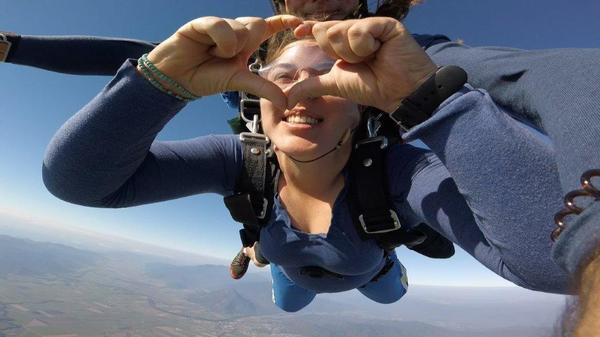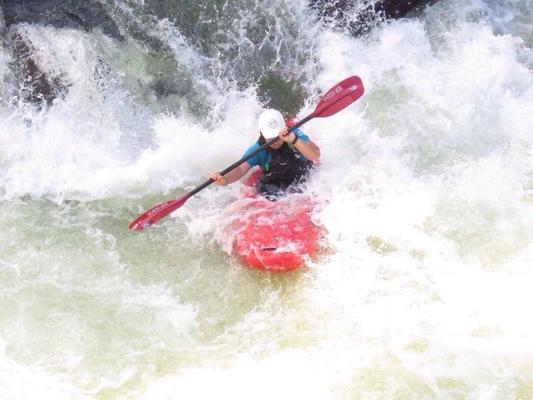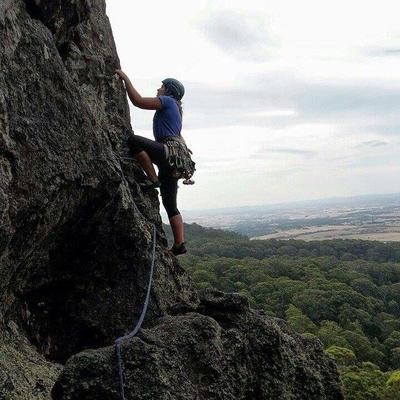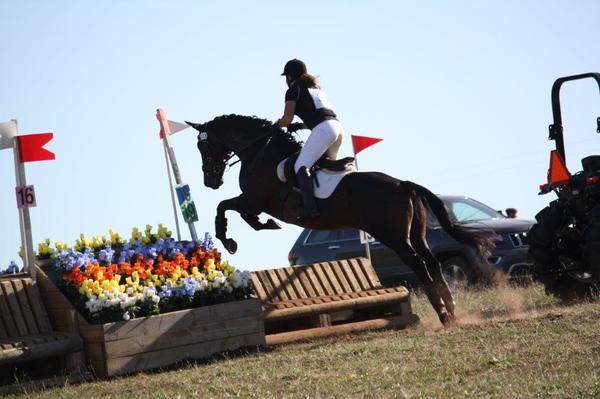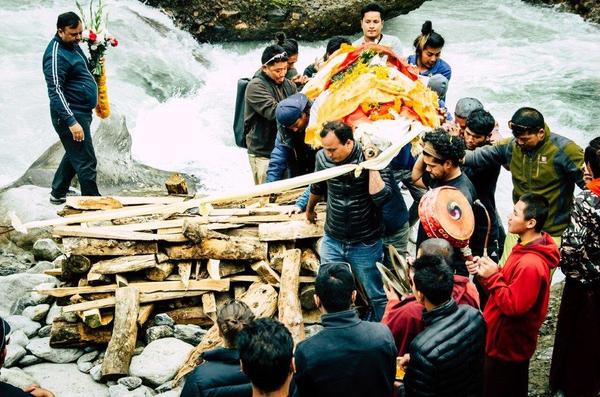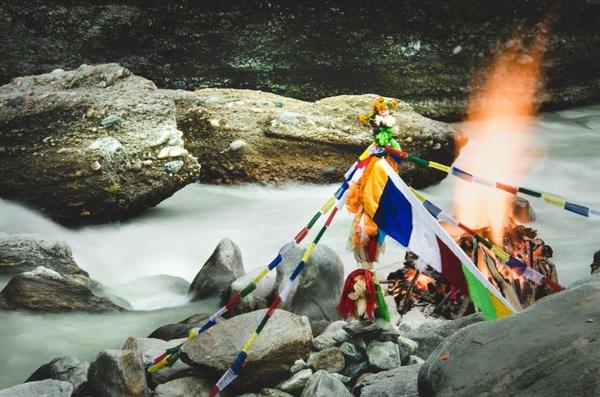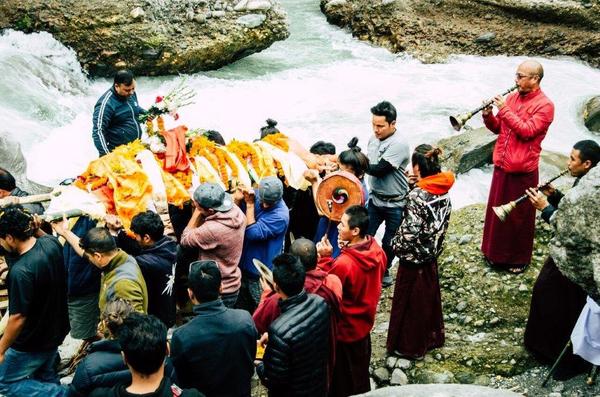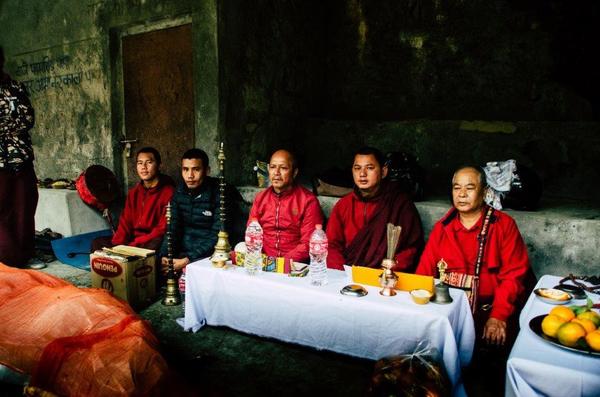By Kyra Gillespie
The legacy of a young Gembrook woman who died while kayaking in Nepal is being honoured by her loving parents, who have set up a foundation in her name.
Sue and Colin Emary have set up the ’Cassanga Fund’ in a tribute their daughter Cassandra Emary, with the goal of raising one million dollars to set up an adventure school supporting women in adventure sports, as KYRA GILLESPIE discovers.
We sat cross-legged in Cassandra’s room in the Emarys’ Gembrook home. It’s been converted into a peaceful sanctuary; Nepalese flags splash colour across the white walls and pitched roof; a water fountain babbles quietly and candles flicker on photos of her smiling face.
On November 29 last year, Cassandra Emary was involved in a kayaking accident that claimed her life.
The 23-year-old was pronounced dead by doctors upon arrival at Nepal’s Western Regional Hospital after sustaining serious injuries at Seti River in Pokhara, Nepal.
Ms Emary worked as a raft guide and recently competed in the World Rafting Championships in Argentina with the Australian Women’s Rafting Team.
Nepal was like a second home to the up-and-coming kayaker.
Reading her diary aloud, Cassandra’s words flowed from proud mum Sue’s lips: “Through the beautiful gorge, coupled with the constant high quality, exhilarating continuous rapids … “
“That’s where she passed away,“ Sue added.
“The day she passed she started her first day of work with Paddle Nepal; she was to train three Nepali women. They went out on the lake and she was going to teach them how to kayak in the hopes of getting to world standard and be able to compete.
“She was really committed to getting the women involved, and she was a great role model to the women.
“When we were over there for the cremation I couldn’t believe how many women came up to us and just said how much they absolutely loved her, how much they looked up to her, how beautiful she was, how much love she gave to everybody and how much she cared for everybody. She had a lot of time for a lot of people. She kept some amazing relationships.“
Cassandra fit in a variety of sports and outdoor activities in her short life; back home in Gembrook, she was a well-respected outdoor recreation guide.
“Money wasn’t important to her,“ loving dad Colin said.
“She knew she needed it as a vehicle to do what she needed to do, but she wasn’t one that was going to buy houses and the rest. No.“
Her parents describe her as “adventurous, gutsy and courageous.“
“She was never afraid of dying; she was more afraid of not living,“ Sue said.
“To her it was more important to live her life to the fullest, get out there and make a difference.
“She’s been an inspiration to many people with what she’s been able to achieve in her short time.“
The young adventurers’ parents said their daughter had always been aware of the risk of her chosen sport.
“We know she wouldn’t have had an issue dying. She wasn’t naïve, she was aware of the risks. But for her it was about living her life and not letting fear control her.
“For her, it was: ’If I’m going to die, I’m going to die doing what I love.’“
Cassandra was no amateur; she had been perfecting her paddling for years prior to her tragic accident.
“We trusted she would keep herself safe – and she did keep herself safe, she did all the right things, but nature took its course. Nobody knows why she died, how it actually happened, because there were no witnesses, she was the last one in the group down that river,“ Sue said.
“Nature was too strong,“ Colin reflected.
“They know what happened, but they don’t know exactly how.
“Basically, when they’re paddling the river they come to each section and they’ll get out and walk beside the river to scout it. And Cassandra and the other girl she was with weren’t confident in doing that section because the top section was really dangerous. So they walked halfway down, and got in an eddy there – which is a calm bit of water, and they both got their kayaks in.
“Reagan took off into the current and she did okay – and the other two had already gone through. There was four of them. After Reagan, Cassandra followed, but it just didn’t work out. Her kayak flipped for whatever reason, and when your kayak flips you need your paddle to get yourself back up again; if you don’t have your paddle, it can be difficult yourself back up again.
“So at some point she lost grip of her paddle, so she had to get herself out of the kayak – which she did; she was able to pull out of the kayak, and her kayak ended up going down the water. And that’s how the other three knew that she was in trouble.
“She didn’t end up following it down the river, which is usually what happens. If your kayak goes down you swim with it, and she didn’t surface. They knew then something went on.
“So she ended up off course, around six metres, and she ended up wedged in a sieve. She was between rocks that she would never have got out of.“
Cassandra’s family still don’t know exactly how she got stuck where she did.
“We’re very grateful that they were able to get her out. We know it took quite some time for them to locate her, because she was under the water, and it took seven of them to pull her out,“ Sue said.
“These young junior boys that were part of the commercial rafting group that were following down the river at the time, they tied themselves all up in ropes and they risked their lives to get in the water to the other side of the river. They performed CPR on her for a couple of hours until they got her to hospital, where they declared her deceased.
“She was just under the water far too long by the time they got to her.“
Sue said Cassandra had run that same river “100 times“ and knew where the danger spots were.
“She was with world-class kayakers, they had safety training, the lot. But where she came unstuck was a very difficult spot, and they couldn’t get to her quickly,” Sue said.
“We know her cause of death was drowning, and she had bruises on her arms from where she became stuck on the rocks, but we don’t know whether she fell unconscious from hitting her head, or whether she ran out of breath. However or whatever we’ll never know.“
The post-mortem wasn’t conducted until Colin and Sue arrived in Nepal. The report was written entirely in Nepalese.
“It was pretty challenging; we had the support and assistance from the Consulate. We made the call before we got on the plane that we didn’t want her body touched because otherwise they would have performed a post-mortem straight away,“ Sue said.
“She was put in cool storage under lock and key by the police and the army. Nobody saw her body until we arrived there 48 hours later. The conditions were … “ she trailed off.
In Nepal, Sue and Colin made the decision to have Cassandra’s body cremated.
“We were in shock the whole time; we were journeying devastation and shock. We were completely in the hands of the Nepali community, her community, which looked after us and guided us,“ Sue said.
“We know that’s what Cassandra would have wanted, and for her to be graced the honour and the privilege of being able to have a traditional Nepali cremation … I think that’s the most amazing gift that she could have given them and they give her.“
Cassandra lived in Nepal, had her own room in a house with two local friends that she called her brothers.
There were close to 100 people at the cremation, who all hand a hand in preparing the ceremony.
The men built her pyre and collected the wood, and the women collected the flowers.
“We felt so loved and so supported there, they just do death so differently.
“The community was very traumatised, and very grateful that they could say goodbye in the way she would have wanted it done.“
Five Buddhist Monks led the service; they conducted 108 prayers over 108 butter candles.
No words were spoken.
They each lit a candle and set it down the river.
“It was absolutely spectacular,“ Colin said.
Sue and Colin were already thinking about the Cassanga Fund before they’d even landed back on home soil.
“As soon as we found her journals in Nepal and read that she wanted to make a difference, we thought, ’Let’s do this.’ Let’s honour her legacy.“
The Emarys are asking local businesses and community groups to help get the word out about the Cassanga Fund, donate services for raffles or make a donation.
Donation tins have already been distributed in businesses all around Cardinia Shire and beyond, including in Gembrook, Emerald and Cockatoo.
“For us it’s about making a difference; for people to see her story, read her story and be inspired by her to get off their butts and have a little bit of Cassanga in their life. Whether it’s setting some goals, making some plans, and making dreams a reality.
“She led by example, look what she did – she led a very fulfilling life, considering she was only 23 years old. She advocated ’Life, Be in it.’
“For us it’s about doing everything we can to get to this million. With that we will start an adventure school in her name and her honour to support women in adventure sport.“
100 per cent of proceeds donated will go back into the Cassanga Fund, supporting and promoting unity and genuine inclusion of women in outdoor sports and the eco-adventure community around the globe.
“We don’t want her death to be a sad thing, we don’t want her to be a tragic statistic. She died doing what she loved and she died in a country she loved,” Sue said.
“It’s a love story, and I want it to be a story of inspiration; I don’t want her to be forgotten about and I don’t want her passing to be something people are afraid to talk about. We want her legacy to live on, and people to be inspired by her.
“With all of us together, we can do it. It’s going to take everybody to make that difference, for her legacy to live on.”
Women’s Adventure Film Tour have generously donated 12 short films to be screened at Emerald Secondary College Performing Arts Centre on April 16 commencing at 7pm.
The funds raised at the screening will go to the Australian Women’s Rafting Team; Cassandra was meant to compete with the team in May.
More information on how to get involved can be found on Facebook or at www.cassangafund.com.au

